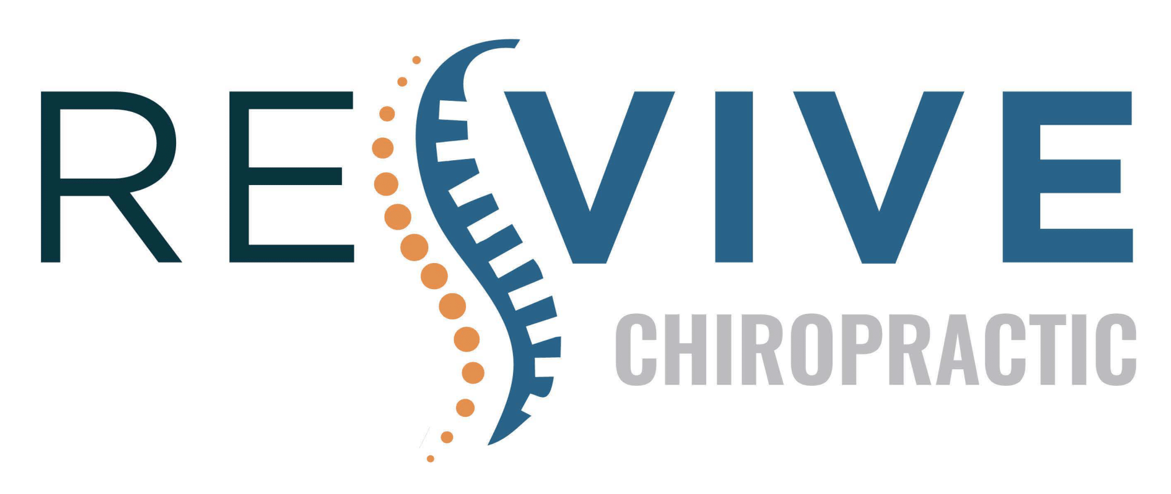As a local chiropractor, I understand that dealing with lower back pain can be overwhelming. You may be considering the benefits of traditional treatments like pain relievers and physical therapy, which are often designed for quick relief. However, I encourage you to explore the advantages of chiropractic care and other natural healing options.
Chiropractic treatment focuses on restoring proper alignment to the spine and improving overall function, helping to alleviate pain at its source rather than just masking the symptoms. In addition to chiropractic adjustments, we also emphasize the importance of holistic approaches, such as exercise, nutrition, and stress management.
While conventional methods have their place, many patients find that incorporating chiropractic care into their wellness routine leads to more sustainable relief and improved quality of life. By understanding the unique benefits of both conventional and alternative treatments, you can make a more informed decision about the best path for your pain management. Together, we can explore the nuances of these options and find a strategy that works best for you.
Overview of Lower Back Pain
Lower back pain is a common issue that affects millions of individuals at some point in their lives, often appearing suddenly or developing gradually. As a chiropractor, I want to help you understand that this pain can manifest in various ways, whether it's a sharp, stabbing sensation or a persistent dull ache. The underlying causes can be diverse, including muscle strains, herniated discs, or even certain medical conditions. Additionally, factors like stress and poor posture can exacerbate your discomfort, making it crucial to stay attuned to your body's signals.
When faced with lower back pain, you may notice how it disrupts your daily activities. Tasks that once seemed trivial, such as bending down to tie your shoes or lifting a grocery bag, can suddenly become daunting. Sitting for prolonged periods or getting restful sleep may also become challenging. It's not uncommon for persistent pain to affect your mood, leading to feelings of frustration or helplessness.
Understanding the structure and function of your spine is key to grasping why lower back pain occurs. Your spine is made up of vertebrae, discs, and muscles that work in harmony to support your body. However, injuries or degeneration in any of these components can result in pain. Factors such as age, body weight, and activity levels can influence your likelihood of experiencing lower back issues.
Recognizing the signs and symptoms early on can empower you to take proactive steps toward relief. As your chiropractor, I want to reassure you that you aren't alone in this journey. Many people share similar struggles, and by learning about lower back pain, we can work together to explore natural healing methods and effective chiropractic solutions tailored to your needs.
Effective Conventional Treatments
When it comes to managing lower back pain, I want to share some effective conventional treatments that can provide relief, along with an emphasis on the benefits of chiropractic care and natural healing.
Many of these treatments are well-researched and commonly used in medical practice, and understanding your options can empower you to make the best decisions for your health.
One of the first approaches often considered is the use of over-the-counter pain relievers. Nonsteroidal anti-inflammatory drugs (NSAIDs), such as ibuprofen or naproxen, can help alleviate pain and reduce inflammation.
However, it's essential to know that while these medications can offer temporary relief, they don't address the underlying issues causing your pain.
As a chiropractor, I often recommend physical therapy as an excellent complementary option. A physical therapist can create a personalized exercise regimen designed to strengthen your back muscles and improve your flexibility.
This not only helps relieve pain but also builds resilience against future injuries.
In certain cases, your healthcare provider may suggest spinal injections to deliver anti-inflammatory medication directly to the affected area.
While this can provide localized relief, it's important to consider how chiropractic adjustments can help restore proper alignment and function to your spine, potentially reducing the need for invasive procedures.
Here's a quick summary of effective conventional treatments for lower back pain, with a focus on how chiropractic care can enhance your healing journey:
- Over-the-counter pain relievers: NSAIDs for immediate relief, but consider chiropractic care for long-term solutions.
- Physical therapy: Customized exercises to strengthen and improve flexibility, often integrated with chiropractic techniques.
- Spinal injections: Targeted medication for localized pain relief, with chiropractic adjustments to address underlying causes.
- Prescription medications: Stronger pain relief options for severe discomfort, but let's explore natural alternatives through chiropractic care as well.
Remember, addressing lower back pain effectively often requires a holistic approach.
As your chiropractor, I'm here to guide you on your path to natural healing and help you regain your quality of life.
Popular Alternative Treatments
As a local chiropractor, I want to share some insights into popular alternative treatments that can effectively address back pain. Many individuals come to us looking for relief when traditional methods fall short, and I believe exploring these options can lead to a more holistic approach to recovery.
One of the most recognized treatments is acupuncture. This ancient practice from China involves inserting fine needles into specific points on the body. Many of my patients have reported significant reductions in pain and improvements in mobility after undergoing acupuncture sessions, making it an appealing option for those struggling with back discomfort.
Chiropractic care is another cornerstone of alternative treatment for back pain. Our focus is on spinal adjustments to align your spine and alleviate discomfort. Regular chiropractic visits can't only help manage pain but also enhance your overall spinal health, leading to a better quality of life.
Massage therapy is also an effective alternative that we often recommend. By targeting tight muscles and promoting better circulation, massage can relieve tension in the back and foster relaxation. Many of my patients find this approach both soothing and beneficial for managing their pain.
Incorporating practices like yoga and Pilates can provide both physical and mental benefits as well. These disciplines improve flexibility, strengthen core muscles, and encourage better posture—all of which can contribute to reducing back pain.
Herbal remedies and supplements are becoming increasingly popular too. For example, turmeric has well-documented anti-inflammatory properties that may help alleviate discomfort. However, I always advise my patients to consult with a healthcare professional before introducing new supplements into their routine.
Finally, techniques such as mindfulness and meditation can be invaluable in your pain management journey. These practices not only help manage stress but also foster a positive mindset, which can significantly impact your overall well-being.
As a chiropractor, I'm here to guide you through these alternative treatments and help you discover the best approach for your back pain relief. Your journey to recovery can involve a combination of these methods, tailored to your individual needs.
Comparing Effectiveness and Safety
As you explore options for alleviating back pain, I want to share some insights about chiropractic care and other natural healing methods. It's essential to understand how these approaches can effectively support your recovery while prioritizing your safety.
Many patients have found relief through chiropractic adjustments, but I want to ensure you're well-informed about what to expect.
When considering the effectiveness and safety of chiropractic care and other alternative treatments, here are some important factors to keep in mind:
- Efficacy: Chiropractic adjustments have been supported by clinical studies indicating their ability to reduce back pain and improve function. However, everyone's body responds differently, so results may vary from person to person.
- Side Effects: Unlike some traditional medications that may lead to gastrointestinal issues or dependency, chiropractic care typically has minimal side effects. Most patients experience only mild discomfort after an adjustment, which usually resolves quickly.
- Long-term Results: While chiropractic care can provide immediate relief, it's also designed to promote long-term wellness. Regular adjustments may help prevent future pain episodes, making it a valuable part of your overall health plan compared to solely relying on medications.
- Personal Health: Your unique health conditions, medical history, and lifestyle play a significant role in the effectiveness of any treatment. I encourage you to discuss these factors with me so we can tailor a plan that suits your individual needs.
Ultimately, my goal as your chiropractor is to help you navigate your options for managing back pain. By understanding the effectiveness and safety of chiropractic care and other natural healing methods, you can make informed choices that align with your health goals.
Together, we can work towards a pain-free and healthier future!
Making an Informed Choice
Making an informed choice about your back pain treatment is crucial for your recovery journey, and as a local chiropractor, I want to help you understand the benefits of chiropractic care and natural healing. With numerous options available—some conventional and others alternative—it's vital to know what each treatment involves and how it can cater to your specific needs.
I encourage you to gather information from reliable sources, including healthcare professionals, research studies, and patient testimonials. This will empower you to compare various treatment methods based on their effectiveness, safety, and how they align with your personal health history.
As you consider your treatment options, reflect on your own preferences and values. Are you open to exploring chiropractic care, which emphasizes natural healing and the body's innate ability to recover? Understanding your inclinations can help you make a more informed decision.
It's also important to evaluate potential side effects and the long-term benefits of each treatment option. During our consultations, please feel free to ask any questions you may have. I'm here to encourage your inquiries and provide clear, informative answers.
Additionally, discussing your treatment choices with family or friends who've experienced similar back pain issues can be beneficial. They may share insights or support that can bolster your confidence in your decision.
Remember, effective treatment often involves a combination of approaches. Chiropractic adjustments, physical therapy, and complementary therapies such as acupuncture or massage can all contribute to your recovery.
Ultimately, trust your instincts while also considering factual information. Your back pain journey is distinctly yours, and you deserve a treatment plan that aligns with your individual needs and lifestyle.
Take your time, weigh your options, and choose a path that feels right for you. I'm here to guide you through the process of natural healing and help you reclaim your well-being.
Conclusion
As a local chiropractor, I want to help you understand the various options available for managing your lower back pain. It's essential to explore both effective conventional treatments and popular alternative therapies to find what works best for you.
Chiropractic care, for instance, focuses on spinal alignment and can significantly alleviate pain and improve mobility. Alongside this, incorporating practices like physical therapy, which strengthens the muscles supporting your back, and acupuncture, known for its pain-relieving properties, can enhance your healing process.
Creating a personalized approach that combines these strategies may offer the best outcomes for your pain management. Always remember to consult with a healthcare professional before starting any new treatment to ensure the methods you choose are safe and tailored to your specific needs. Together, we can work towards a healthier, pain-free life.



